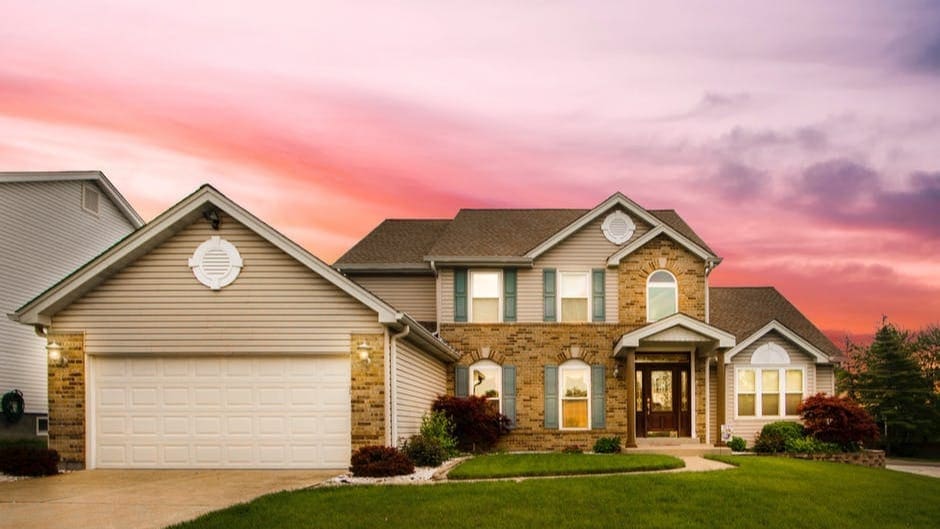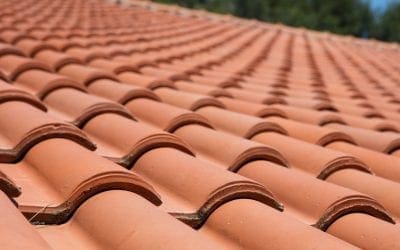Freak weather events are making the news and worrying scientists. With weather disasters costing over $155 billion annually, it’s time to make sure you’re prepared for the worst. Will your roof stand up to the wind and rain? Both flat roofs and pitched roofs come with different pros and cons. Know the major differences of a pitched roof vs. flat roof and the advantages of each.
What is a Pitched Roof?
A pitched roof is one that has a slope in it. Often this downward slope is in two parts, sloping away from a ridge in the center of the roof.
The pitch of the roof is a mathematical measure of its steepness. It’s calculated by dividing the height of the roof by the span or horizontal depth of the roof.
Pitched rooftops can be made from a variety of materials. The most common is asphalt shingles.
These inexpensive materials are also very durable. They come in many styles and colors to suit all tastes.
Other types of roofing materials include slate, tile, and metal roofing. Slate is an upscale material that performs very well over a long period and is regarded as highly attractive too. Lifespans of over 100 years are not unusual.
Ceramic tiles are also very durable and can last as much as 70 years. Ceramic tiles can be very attractive but their susceptibility to damage by high winds and temperature fluctuations makes them only suitable for certain situations.
Metal roofing in the form of metal shingles is a very lightweight material but does require specialist installation. It can have an attractive finish when new and can then be painted to extend its life and maintain its aesthetic appeal.
What is a Flat Roof?
A flat roof is a misnomer. Although it is called a flat roof no flat roof should be truly flat. It should have a slight slope to allow drainage of rainwater and to stop the pooling of water.
Traditional flat roofs have a layer of tar and gravel applied to the upper surface. Some other types of flat roof materials include Modified Bitimum, PVC, TPO, and EPDM. These types of products are sealed roof systems and prevent water from getting into the home or structure.
Some flat roof products (PVC and TPO) carry an Energy Star rating on them. This will help the area not get so hot in the summer by reflecting the majority of the heat up and away from the home.
Advantages of a Pitched Roof
Pitched roofs very effectively divert water away from the roof and building below. The slope of the roof is steeper than the slight slope of a flat roof and so quickly disperses the water. The rainwater is collected in gutters and flows away safely to a drain.
Because rainwater does not lie on the slope of the pitched roof it is more resistant to leaks than a flat roof. They are therefore excellent choices in high rainfall areas.
Pitched roofs last longer than flat roofs precisely because they are less likely to leak. The long-life means that they may work out cheaper in the long run than a lower-priced flat roof.
Inspecting a pitched roof is easily done. An external inspection is likely to reveal any problems.
If repairs are needed to a pitched roof, they are cheaper than for flat roofs. The repairs are simpler and less likely to involve fundamental damage to the structure of the roof. Replacing a few roof shingles is simple, cheap and quick.
Pitched roofs can provide you with additional living or storage space. You can often tuck in an extra room under the roof. With suitable insulation, windows, and ventilation an attic room can be a useful and characterful addition to your home.
Disadvantages of a Pitched Roof
The better rainwater protection of a pitched roof comes at a premium price. A pitched roof is almost always more expensive than a flat roof alternative. It involves more materials and the installation work by a contractor is more complicated and time taking.
Where a home has a pitched roof, it may restrict some of the living space by cutting into the ceilings of rooms. This can make it difficult to fit taller items of furniture under sloping ceilings. bumping your head may also be a problem.
When it comes to replacing a pitched roof, expect to have to pay more than you would for a flat roof. Removing the old roof involves moving more materials than a flat roof does and add to that the more expensive roof replacement.
Advantages of a Flat Roof
A good flat roof, fitted by a qualified flat roof installer can provide effective protection against rainwater for about 10 – 20 years. It will need a slight slope and effective drainage to be fitted to be fully functional.
Add to the 10 – 20-year effective life of a flat roof, a lower installation cost and you have an attractive roofing solution for many situations. Fewer materials are needed for a flat roof so transporting the materials, moving them and installing them takes less time and costs less to complete.
Because there is less work involved in installing a flat roof it is less disruptive for homeowners. The work is completed more quickly too.
A flat roof can provide you with more options for how to use the space above the roof. The rooftop can be prepared so that you can use it as a rooftop garden or terrace.
Disadvantages of a Flat Roof
A flat roof has one major disadvantage. It is more vulnerable than a pitched roof to leaks. Even the slight slope the contractor will build into the flat roof will not encourage water to flow away as fast as a pitched roof does. Water is the enemy of roofs.
The cost of a flat roof may seem attractive compared to a pitched roof but this may be a short term saving that you regret in the long run. The lifespan of a flat roof is shorter than a pitched roof. You may have to replace or repair the roof more frequently than you would a pitched roof.
Often the first time you know you need a repair to your flat roof is when you have a leak. It’s extremely difficult to identify when a repair is needed until the water has entered the roof space. It’s not like you can notice a missing or broken shingle as you can with a pitched roof.
Once a leak has begun to show, it’s likely that the water has begun to do damage to the roof. Water can damage the internal structure and materials long before a leak emerges below it. Rotted materials can weaken your roof so you may need a major and therefore expensive repair.
The Pitched Roof vs. Flat Roof Decision
The advantages and disadvantages are clear. Both types of roofs have their place. Pitched roof vs. flat roof, it’s up to you to decide what’s best for your situation.
If you need some help deciding, contact us here.





0 Comments